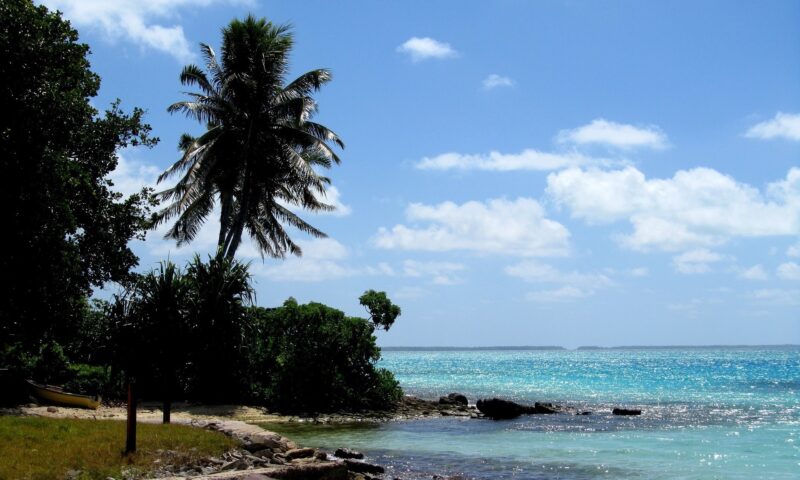Home by the sea: new science shows more sea-level rise impacts on small islands
Rosanne Martyr-Koller, Adelle Thomas, Alex Nauels, Carl-Friedrich Schleussner
Share

Even with the commitments governments made after signing the Paris Agreement to cap global emissions by 2030, the planet is locked into global sea level rise of 1m by 2300, a recent Climate Analytics-led study shows. Another group of researchers analysed newly updated global satellite topographical maps (maps showing the natural and physical layout of the land), comparing these with existing sea-level rise projections, and found that millions more people are vulnerable to flooding than previously thought – and soon, by 2050.
Small Island Developing States (SIDS) are on the front line of climate change, and have played a leading role in advocating for stronger action to limit global warming. This news on sea level rise will be particularly concerning for SIDS, who are susceptible to coastal flooding and rising sea levels because a large proportion of their population, infrastructure and assets are located in the coastal zone.
(More) paradise lost: increased land loss from sea level rise
Low-lying islands will lose more land from rising sea levels than originally thought. In the Bahamas, projections for sea level rise impacts by 2050 using older topographical maps reveal at-risk land along the northern coast of the Grand Bahama island and the western coast of the Great Abaco island. The updated maps paint a dire picture, with larger portions of these islands shown to be at risk.
In addition, the study shows potential land loss on other islands in the Bahamas that were not expected to experience land loss under the same moderate sea-level rise projections.
In the Pacific, the projection for Tuvalu is even starker: the entire atoll is at risk from flooding from sea-level rise by 2050, not just a part of it, as was previously projected. Land loss from sea-level rise is already a sad reality for Pacific SIDS: several low-lying islands in the Solomon Islands and Micronesia have already been lost and more are experiencing severe erosion due to sea level rise since the mid-20th century.
These results are highly concerning, not least because many SIDS are located in the tropics, a region expected to experience higher sea level rise than the global average. Caribbean coastal regions will lose over 3100 km2 of land due to sea-level rise; this number will only grow as estimates are updated to account for improved topographical maps.
Economic losses
In the Pacific Islands, where almost all major services, settlement and tourism infrastructure are coastal, sea-level rise and coastal flooding pose severe economic risks. Similarly, tourism is a major income generator for people in the Caribbean. There, moderate sea-level rise of 1m is projected to cause damage to at least half of tourist resorts and the tourism industry in the Bahamas alone could face annual losses of almost USD 900 million by 2050.
The impact of sea level rise is not limited to low-elevation islands and atolls. Higher-elevation islands that do not exhibit much land-loss from sea level rise are also susceptible to substantial economic losses due to the large proportion of their assets and infrastructure located directly on the coast.
For example, 80% of hotels in Barbados are located within 250m of the high-water mark, making the country’s tourism industry vulnerable to moderate sea level rise. Projections indicate that 80% of lands surrounding ports in Caribbean Community (CARICOM) countries could be inundated with 1m of sea level rise. These figures will mount as the locations and vulnerability of assets and infrastructure are updated.
More than money: non-economic losses from sea level rise
SIDS have more to lose from sea-level rise and coastal flooding than money. Sea-level rise compounds existing vulnerabilities, such as water scarcity, and coastal hazards like tropical storms.
In Pacific SIDS, sea level rise is increasing the salinity of several coastal aquifers, affecting the quality of water supply for local people. This has serious implications for inhabitants of low-lying Pacific islands and atolls, for whom coastal aquifers are the only source of freshwater.
Sea-level rise has made the impact of tropical storms more severe and increased displacement and destruction, setting countries back in their development and limiting development potential.
Additionally, sea level rise threatens cultural heritage and preservation in many SIDS, where cultural and ceremonial sites, including cemeteries, are found in coastal areas. Often their location is fixed, so cannot be moved in response to flooding caused by rising seas. In the Pacific, sea-level rise could render entire island nations uninhabitable, raising questions of sovereignty.
Our actions matter: emissions released now contribute to sea-level rise for centuries to come
For the first time, researchers linked countries’ committed near-term emissions to long-term sea level rise. The study shows that had governments committed to peak emissions in 2016, one year after the Paris Agreement, we could have saved almost 10cm of sea level rise by 2100 and 20cm by 2300.
Because we are locked into 1m of sea level rise by 2300, coastal losses and damage are inevitable. This means that political discussions about needs and responsibilities in supporting adaptation are even more relevant, as is the question of how to go about supporting or compensating countries affected by climate change – known as ‘loss and damage’.
These findings also give hope and are a call to action. Near-term actions to reduce emissions matter and have centuries-long effects on sea-level rise. There is potential to reduce long-term sea level rise through more ambitious national emission reduction targets.
Limiting warming to 1.5°C compared to pre-industrial levels will also significantly reduce risks related to long-term sea level rise. Governments agreed to this goal when they signed the Paris Agreement. Now they urgently need to strengthen their commitments (Nationally Determined Contributions, or NDCs) by 2020 to put us on track for 1.5°C. The livelihoods of people living on the world’s small islands and their descendants depend on it.












